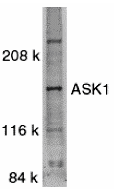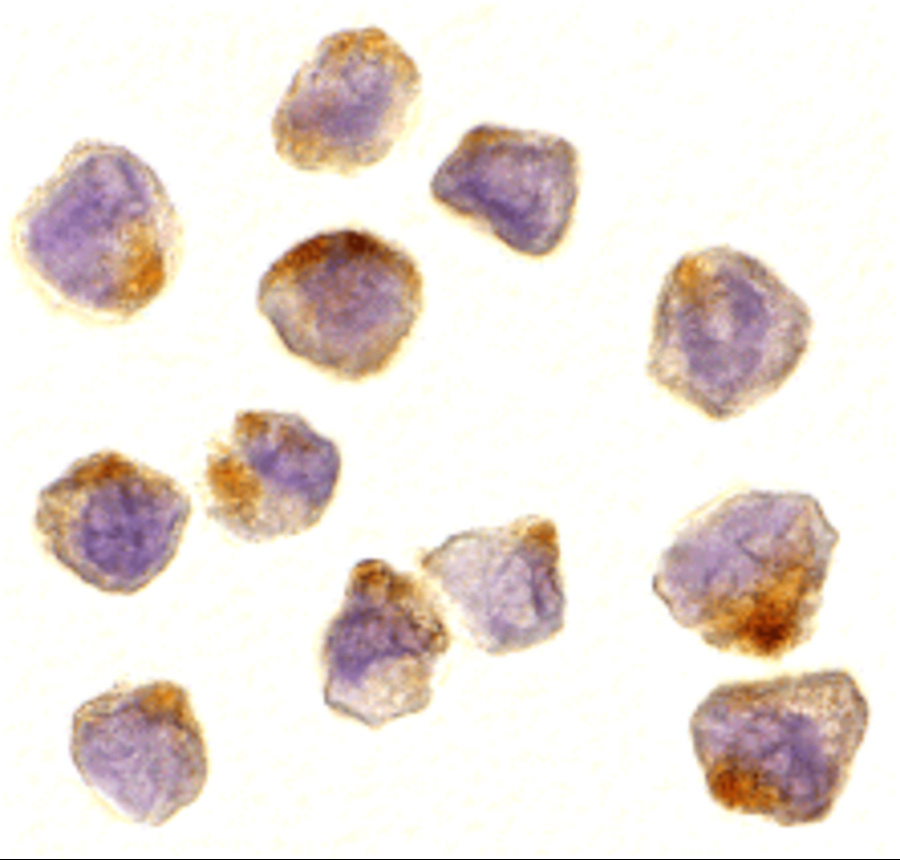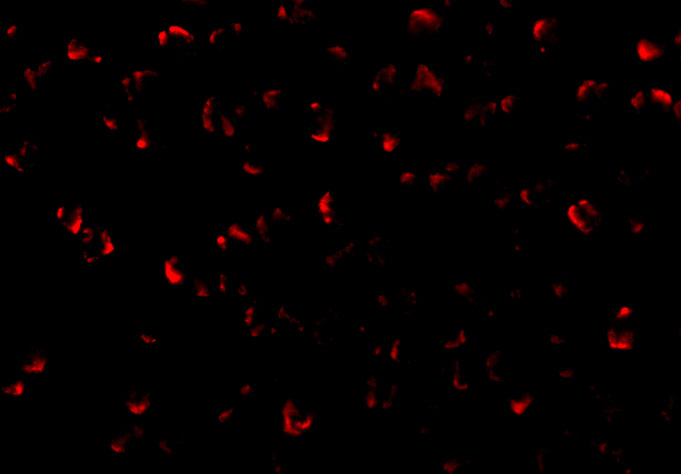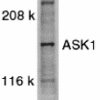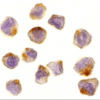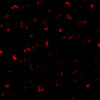Anti-ASK1 Antibody (1151)
$445.00
SKU: 1151
Categories: Antibody Products, Apoptosis Antibodies, Products
Overview
Product Name Anti-ASK1 Antibody (1151)
Description Anti-ASK1 (CT) Rabbit Polyclonal Antibody
Target ASK1
Species Reactivity Human
Applications ELISA,WB,ICC,IF
Host Rabbit
Clonality Polyclonal
Isotype IgG
Immunogen Peptide corresponding to aa 1356-1375 of human ASK1. This peptide sequence is different from that of mouse in the last two amino acids.
Properties
Form Liquid
Concentration Lot Specific
Formulation PBS, pH 7.4.
Buffer Formulation Phosphate Buffered Saline
Buffer pH pH 7.4
Format Purified
Purification Purified by peptide immuno-affinity chromatography
Specificity Information
Specificity This antibody recognizes human ASK1 (155kDa).
Target Name Mitogen-activated protein kinase kinase kinase 5
Target ID ASK1
Uniprot ID Q99683
Alternative Names EC 2.7.11.25, Apoptosis signal-regulating kinase 1, ASK-1, MAPK/ERK kinase kinase 5, MEK kinase 5, MEKK 5
Gene Name MAP3K5
Gene ID 4217
Accession Number NP_005914
Sequence Location Cytoplasm, Endoplasmic reticulum. Note=Interaction with 14-3-3 proteins alters the distribution of MAP3K5/ASK1 and restricts it to the perinuclear endoplasmic reticulum region.
Biological Function Serine/threonine kinase which acts as an essential component of the MAP kinase signal transduction pathway. Plays an important role in the cascades of cellular responses evoked by changes in the environment. Mediates signaling for determination of cell fate such as differentiation and survival. Plays a crucial role in the apoptosis signal transduction pathway through mitochondria-dependent caspase activation. MAP3K5/ASK1 is required for the innate immune response, which is essential for host defense against a wide range of pathogens. Mediates signal transduction of various stressors like oxidative stress as well as by receptor-mediated inflammatory signals, such as the tumor necrosis factor (TNF) or lipopolysaccharide (LPS). Once activated, acts as an upstream activator of the MKK/JNK signal transduction cascade and the p38 MAPK signal transduction cascade through the phosphorylation and activation of several MAP kinase kinases like MAP2K4/SEK1, MAP2K3/MKK3, MAP2K6/MKK6 and MAP2K7/MKK7. These MAP2Ks in turn activate p38 MAPKs and c-jun N-terminal kinases (JNKs). Both p38 MAPK and JNKs control the transcription factors activator protein-1 (AP-1). {PubMed:10411906, PubMed:10688666, PubMed:10849426, PubMed:11029458, PubMed:11154276, PubMed:11689443, PubMed:11920685, PubMed:14688258, PubMed:14749717, PubMed:15023544, PubMed:16129676, PubMed:17220297, PubMed:23102700, PubMed:26095851, PubMed:8940179, PubMed:8974401, PubMed:9564042, PubMed:9774977}.
Research Areas Apoptosis
Background A novel MAP kinase kinase kinase (MAPKKK) was recently identified and designated ASK1 (apoptosis signal-regulating kinase 1) and MAPKKK5. ASK1 activates two different subgroups of MAPKK, MKK4 and MKK6, which in turn activate c-jun N-terminal kinase (JNK) and p36 MAP kinase. ASK1/MAPKKK5 is activated by TNFR and Fas through the interaction with members of the TRAF family and Fas-associated protein Daxx. Overexpression of ASK1 induces apoptotic cell death. A catalytically inactive form of ASK1 inhibits TNF -induced apoptosis. ASK1 is expressed in a variety of human and mouse tissues.
Application Images




Description Western blot analysis of ASK1 in SW1353 whole cell lysate with ASK1 antibody at 1:500 dilution.

Description Immunocytochemistry of ASK1 in A431 cells with ASK1 antibody at 10 ug/mL.

Description Immunofluorescence of ASK1 in A431 cells with ASK1 antibody at 20 ug/mL.
Handling
Storage This antibody is stable for at least one (1) year at -20°C. Avoid multiple freeze-thaw cycles.
Dilution Instructions Dilute in PBS or medium which is identical to that used in the assay system.
Application Instructions Immunoblotting: use at 0.5-1ug/mL
Immunocytochemistry: use at 10ug/mL.
These are recommended concentrations.
Enduser should determine optimal concentration for their application.
Positive control: Whole cell lysate from SW1353 cells.
Immunocytochemistry: use at 10ug/mL.
These are recommended concentrations.
Enduser should determine optimal concentration for their application.
Positive control: Whole cell lysate from SW1353 cells.
References & Data Sheet
Data Sheet  Download PDF Data Sheet
Download PDF Data Sheet
 Download PDF Data Sheet
Download PDF Data Sheet

